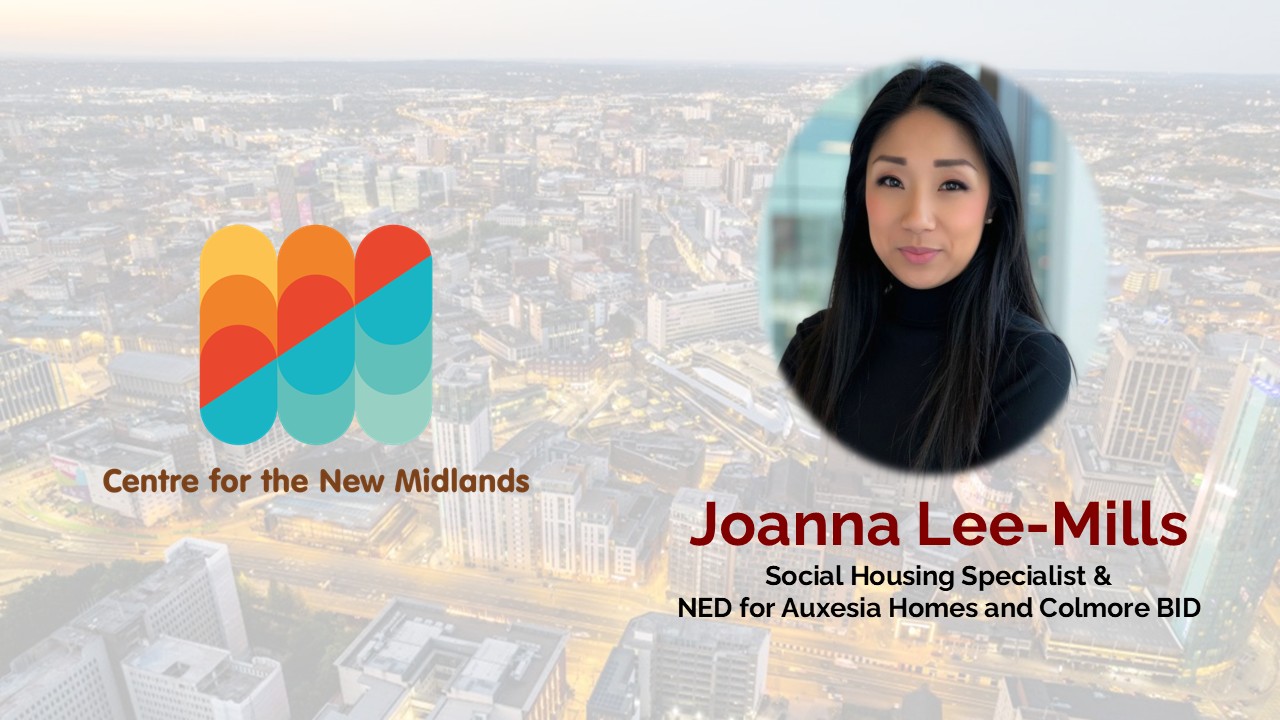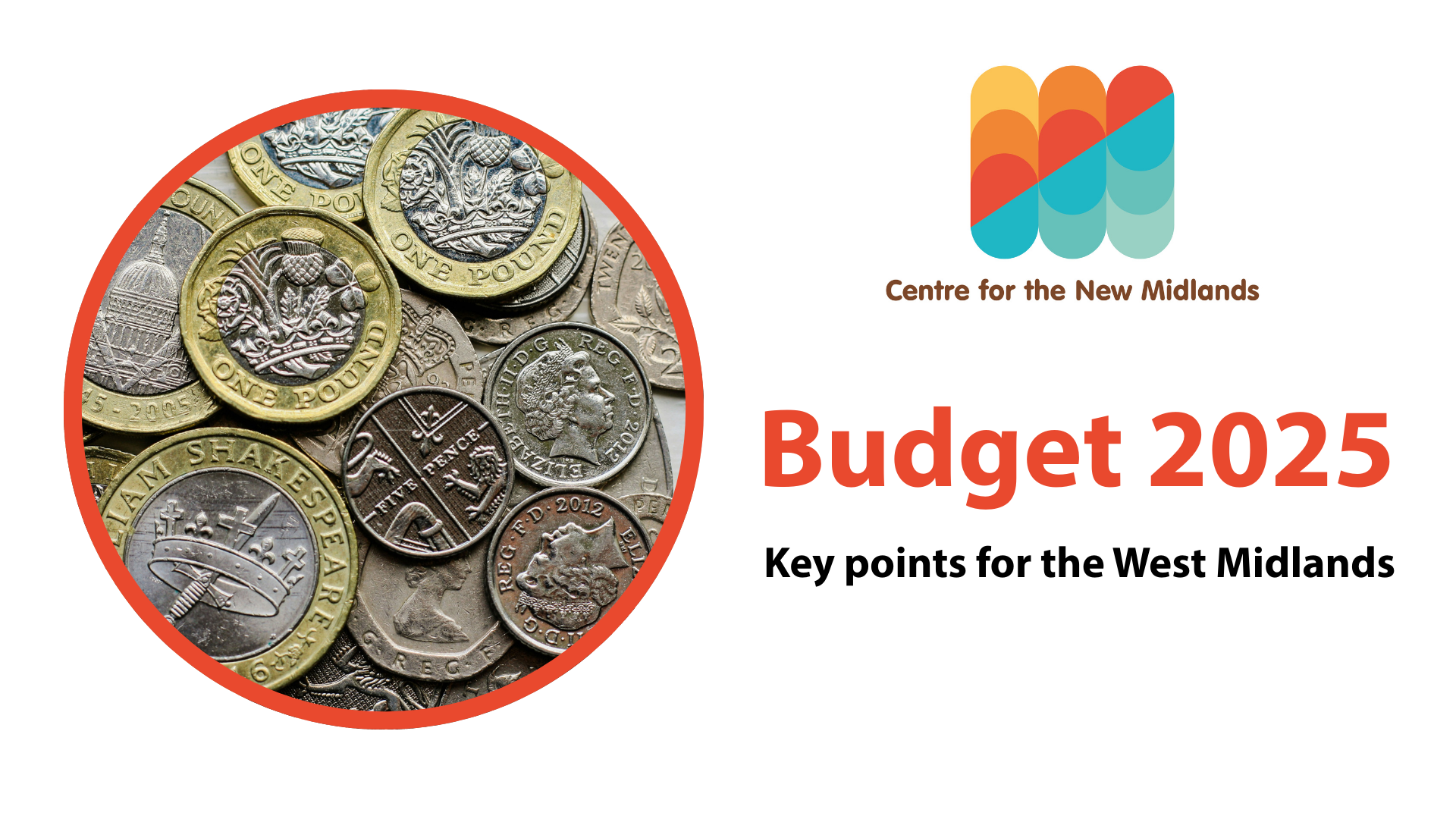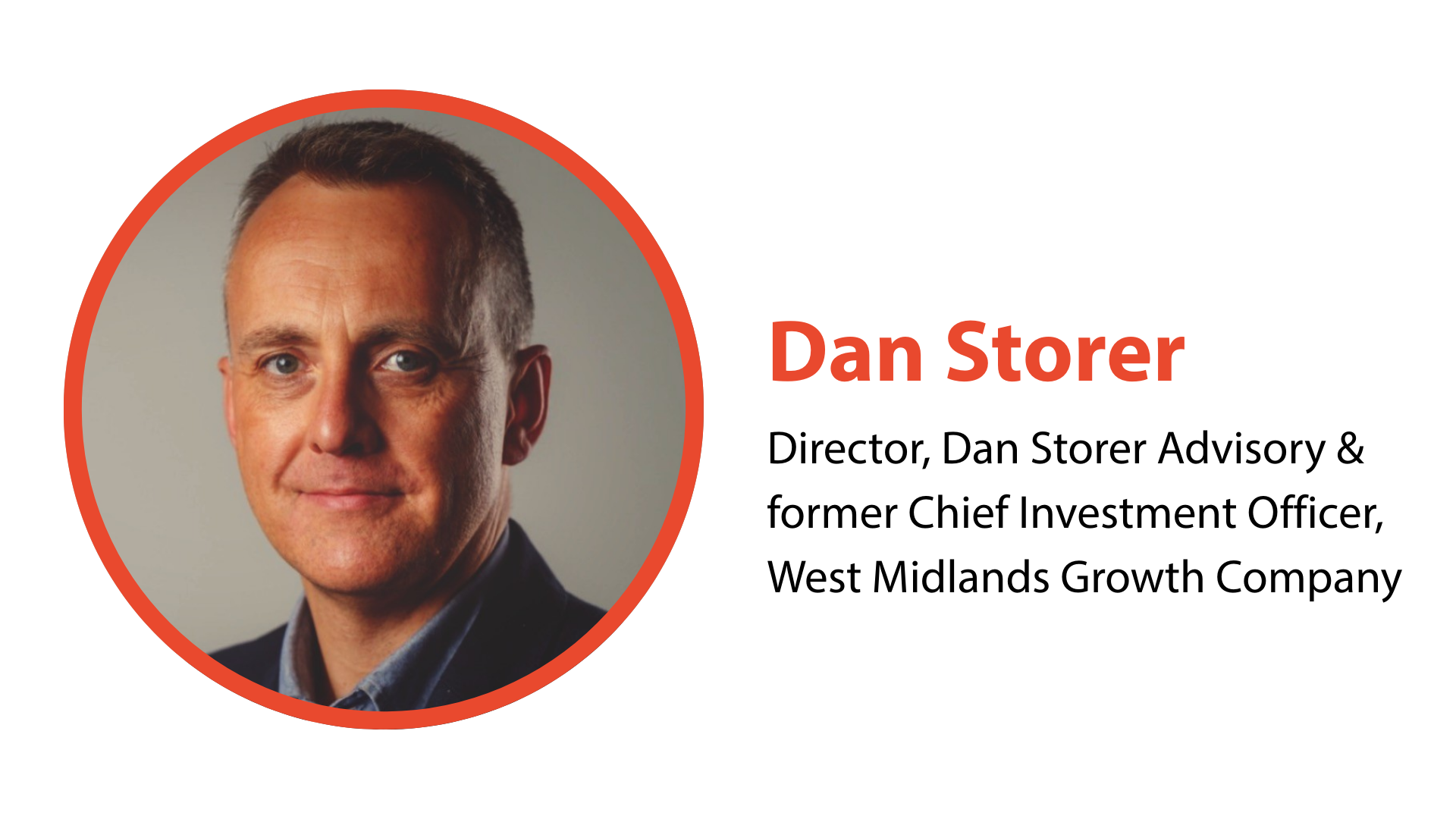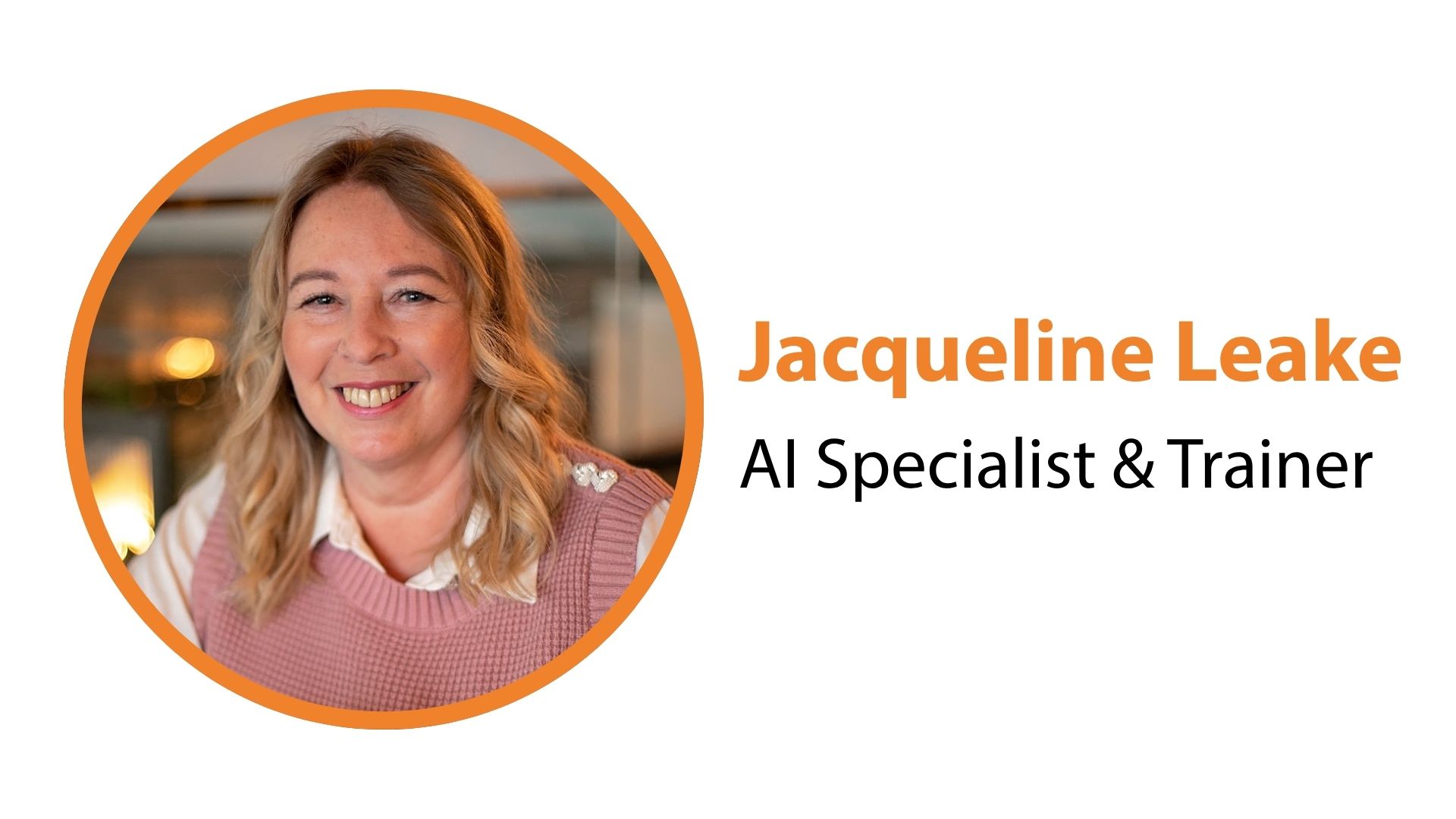On 30th April, the West Midlands Combined Authority published its ‘West Midlands Futures Green Paper’ designed to “to support a conversation across the West Midlands about our long-term strategic priorities as we embark on a ten-year programme of regional transformation to unlock inclusive growth and increase our residents’ living standards.”
In this article, Joanna Lee-Mills (Social Housing Specialist & NED for Auxesia Homes and Colmore BID) provides some of her personal reflections on what the Green Paper means for the Social Housing and its role in delivering greater prosperity across the West Midlands.
(May 2025)
The recently published West Midlands Futures Green Paper represents a watershed moment for one of England’s most diverse and dynamic regions. This comprehensive roadmap for economic transformation comes at a critical juncture, as the West Midlands approaches ten years of devolution and embarks on a new chapter under the leadership of Mayor Richard Parker. As a champion for social and affordable housing, I am genuinely encouraged by the paper’s holistic approach to inclusive growth, and its explicit recognition that housing plays a crucial role in the region’s future prosperity. The Green Paper provides an excellent foundation upon which we can collectively build innovative solutions, to create the housing security that underpins true economic opportunity.
A: A Golden Thread of Growth for All
Mayor Parker’s foreword articulates “Growth for Everyone” as the central principle guiding the region’s strategic vision. This inclusive growth definition, “measured not only by how fast or aggressive it is; but also, by how well it is created and shared across the whole population and place”, establishes a compelling framework which explicitly recognises that prosperity must benefit all communities. This philosophy represents a refreshing departure from economic strategies that prioritise headline growth figures without sufficient attention to who benefits from that growth.
The Green Paper’s economic analysis builds a persuasive case for the West Midlands’ potential: a £77 billion economy with significant growth opportunities, young and diverse demographics, and impressive investment credentials. The region’s median age of 36.6 years, with a third of people under 25 and nearly a quarter under 18, represents a demographic dividend that few other city-regions can match. This youthful population, coupled with the region’s diversity, creates an ideal foundation for the dynamic, innovative economy the Green Paper envisages.
The acknowledgment that 5,600 people currently live in temporary accommodation reflects an important recognition of housing challenges within the broader economic context. Similarly, the paper’s assessment that 39% of children in the WMCA area live in poverty (amongst the highest rates in the country), demonstrates a clear-eyed understanding of the social challenges that economic transformation must address. The commitment to tackle the root causes of homelessness also provides a foundation that housing advocates can build upon as the strategy develops.
B: The Housing Challenge and Opportunity
The West Midlands faces significant housing challenges that the Green Paper honestly confronts. Beyond the 5,600 people in temporary accommodation, the paper’s analysis of the housing shortfall (estimating a need for an additional 52,000 homes in the coming planning period), establishes a clear baseline for action. This acknowledgment, that the WMCA constituent area can deliver only around two-thirds of its collective housing need based on existing forecast supply, demonstrates the scale of intervention required.
The Green Paper’s emphasis on brownfield development, higher density housing around transport hubs, and 15-minute neighbourhoods aligns perfectly with best practices in sustainable, affordable housing development. These approaches create ideal conditions for incorporating social and affordable housing into thriving, connected communities that provide residents with access to employment, services, and amenities. The focus on transport connectivity (ensuring residents can access key services within a 15-minute round trip and wider regional opportunities within 45 minutes), provides a strong framework for integrated housing and transport planning.
The region’s stated commitment to prioritising brownfield sites and increasing housing density represents a significant opportunity for affordable housing delivery. Brownfield regeneration, when combined with appropriate investment models and planning policies, can indeed deliver high-quality affordable homes in locations that support sustainable lifestyles and economic opportunity. This approach also helps preserve the region’s green spaces and countryside, which the Green Paper rightly identifies as important assets for quality of life post-pandemic.
C: Leveraging Strategic Development for Social Housing
The Green Paper identifies several strategic development sites that present exceptional opportunities for social housing delivery. The HS2 stations, West Midlands Investment Zone, and various Growth Zone sites can serve as showcases for how affordable housing can be seamlessly integrated into prestige developments.
The Arden Cross Interchange development, which will bring forward 680,000 square metres of commercial development and 2,750 homes, could pioneer mixed-tenure approaches that ensure a meaningful proportion of social and affordable homes. With travel times to London reduced to just under 40 minutes, this site represents a perfect opportunity to demonstrate how affordable housing can be incorporated into a globally significant development.
Similarly, Birmingham’s Sports Quarter £3 billion commitment could demonstrate how major investment in one of the region’s most deprived areas can directly address housing inequalities whilst delivering broader economic benefits. The project’s stated goal of creating “jobs and skills opportunities in one of the most deprived areas in the country” provides a natural foundation for including affordable housing as part of a comprehensive approach to community development.
The West Midlands Investment Zone, with its focus on advanced manufacturing, green industries, battery technology, med-tech, and digital sectors, creates another significant opportunity for integrated housing solutions. Additionally, the 240-hectare Coventry-Warwick Gigapark, Birmingham Knowledge Quarter, and Wolverhampton Green Innovation Corridor could all incorporate exemplar affordable housing developments that connect residents directly to the employment opportunities these zones will generate.
These flagship projects would provide perfect platforms to demonstrate how social housing can be a cornerstone of successful place-making, rather than an afterthought. By establishing exemplar developments with integrated affordable housing, the West Midlands could set new standards for inclusive growth nationally, and create a powerful narrative about the region’s commitment to housing justice alongside economic transformation.
D: Enhancing the Spatial Development Strategy for Housing Security
The proposed Spatial Development Strategy (SDS) represents perhaps the most significant opportunity for delivering social housing at scale. The Green Paper rightly identifies that the SDS “will be a vital complement to the West Midlands Growth Plan” and must “demonstrate how the region will meet the collective housing need, including redistribution where need generated in a local authority cannot be met within that authority’s boundaries.”
To maximise this opportunity, the SDS could incorporate (amongst other things):
- Ambitious but realistic social housing targets: setting specific proportions of social and affordable housing within overall delivery targets would ensure these homes aren’t marginalised in implementation. By establishing clear, area-specific targets that reflect local needs and opportunities, the SDS could create a transparent framework for accountability.
- Zoning for affordable housing: identifying specific areas where affordable housing will be prioritised could help overcome land value barriers that often impede delivery. This might include designated affordable housing zones around transport hubs, where planning policies specifically prioritise social housing delivery alongside commercial development.
- Strategic site allocations: earmarking public land specifically for social housing development would create a pipeline of deliverable sites. The region’s significant public land holdings )across local authorities, the NHS, transport bodies, and other public agencies) represent a valuable resource that could be mobilised more effectively for affordable housing delivery.
- Infrastructure-led development: ensuring new transport investments are linked to affordable housing delivery would maximise the value of public investment. The proposed metro extensions, railway improvements, and other transport initiatives all present opportunities to coordinate infrastructure and housing delivery for maximum social benefit.
- Design codes for inclusive communities: establishing standards that prevent segregation or inferior quality in affordable housing would support truly mixed communities. These could include requirements for tenure-blind design, shared amenities, and integrated community facilities that bring residents together regardless of housing tenure.
- Green belt review with purpose: if development in the Green Belt becomes necessary, as the Green Paper suggests may be the case, ensuring such development delivers significant social housing benefit would help justify this contentious step. A “social housing first” approach to any Green Belt release could help ensure that difficult decisions about land use deliver maximum public benefit.
By incorporating these elements into the SDS, the West Midlands could create a robust framework for delivering social housing at the scale needed to address the acknowledged shortfall. The SDS would then become not just a land-use planning document but a transformative tool for housing justice.
E: Scaling Affordable Housing Delivery
Building on the Green Paper’s recognition of housing challenges, there are several complementary approaches that could significantly increase affordable housing supply across the region and these include:
- Planning System Reform Considerations: whilst the need for fundamental reform of the UK planning system has been exhaustively debated and documented over many years, it remains a critical factor in affordable housing delivery. Without retreading this well-trodden ground, it is still valid to consider how the West Midlands might work within and around the existing system’s constraints to accelerate social housing provision. The region could pioneer pragmatic approaches such as standardised viability assessments that prevent developers from negotiating down affordable housing commitments, faster pathways for 100% affordable schemes, and consistent cross-boundary policies. Even modest planning improvements would yield significant benefits, whilst we await the more comprehensive national reforms that many acknowledge are necessary.
- Public Land Leadership: the public sector owns significant land assets across the West Midlands and therefore, establishing a coordinated approach to releasing this land specifically for affordable housing development could create a pipeline of deliverable sites. This aligns perfectly with the Green Paper’s focus on brownfield regeneration. A regional public land commission, bringing together all major public landowners, could identify and prioritise sites with potential for affordable housing development.
- Leveraging Institutional Investment: the region’s strong investment credentials provide an opportunity to create new financial vehicles specifically for affordable housing. Working with pension funds, insurance companies, and other long-term investors could unlock significant capital for scaling delivery. The Green Paper’s recognition that the West Midlands is “in the top 10 of investment hubs in Europe” provides a strong foundation for attracting institutional investment in affordable housing.
- Regional Housing Companies: supporting local authorities to establish their own housing delivery vehicles (either individually or collaboratively), could bypass market constraints and directly increase affordable housing supply. These companies could focus specifically on responding to local housing needs that the market isn’t addressing. Examples like Birmingham Municipal Housing Trust demonstrate the potential of this approach, which could be extended across the region.
- Advanced Manufacturing for Housing: the West Midlands’ manufacturing heritage and the Green Paper’s focus on innovation create perfect conditions for pioneering modern methods of construction. Establishing the region as a centre of excellence for precision-manufactured housing could reduce costs, increase quality, and accelerate delivery of affordable homes. This approach would also create high-quality manufacturing jobs, contributing to the region’s broader economic goals.
- Retrofit and Conversion: whilst new build housing is important, converting existing buildings (particularly in town centres and high streets that are transitioning away from retail), could deliver significant affordable housing in sustainable, well-connected locations. The Green Paper’s recognition that “high streets, town centres and transport hubs are becoming places where we live and play, not just places where we shop or work” provides a perfect foundation for this approach.
- Neighbourhood Regeneration: targeted investment in existing residential neighbourhoods with high levels of poor-quality housing could improve conditions while preserving affordability. This might include selective acquisition programmes, block improvement schemes, and neighbourhood management initiatives that improve living conditions without displacing existing communities.
These approaches, alongside various other strategies, would complement the Green Paper’s vision and help translate the inclusive growth principles into tangible housing outcomes for residents. By adopting a multi-faceted approach that combines policy, funding, and delivery innovations, the West Midlands could achieve a step-change in affordable housing provision.
F: Creating an Integrated Affordable Housing Ecosystem
To fully realise the potential of the approaches outlined above, it is clear that the West Midlands would benefit from developing an integrated ecosystem for affordable housing delivery. This would bring together the various strands of the Green Paper – economic growth, spatial development, public service innovation, and net zero transition – into a coherent framework specifically focused on housing security.
Key elements of this integrated approach might include:
- Regional Housing Partnership: in addition to the taskforces and alliances already formed by the WMCA for housing and affordable housing, the region could go further and seek to establish a formal partnership bringing together a wider set of stakeholders such as local authorities, housing associations, developers and community organisations. This would create a powerful coalition for housing delivery and would help coordinate strategy, share learning, pool resources, and advocate for policy change at national level.
- Skills Development Pipeline: the Green Paper’s focus on youth employment and skills provides a foundation for creating dedicated training programmes in housing-related roles. From construction trades to property management, housing support to architectural design, affordable housing delivery requires a diverse range of skills that could create meaningful employment opportunities for the region’s young people.
- Innovation Incubator: creating a dedicated hub for housing innovation could accelerate the development and scaling of new approaches. This might include physical spaces for collaboration, funding for research and development, and structured programmes to test and evaluate new models. The Green Paper’s emphasis on breakthrough innovation provides a conceptual framework for this approach.
- Data and Intelligence Hub: developing sophisticated data systems to track housing need, development opportunities, and delivery performance would support evidence-based decision-making. The West Midlands Data Office could be expanded to include a specific focus on housing intelligence, creating a resource for all regional partners.
- Community Engagement Platform: ensuring residents (particularly those with lived experience of housing insecurity) can meaningfully participate in shaping housing strategy and delivery is essential for effectiveness and legitimacy. A dedicated platform for community engagement on housing issues would support this objective.
By creating an integrated ecosystem, the West Midlands could establish the much needed comprehensive approach to affordable housing delivery that maximises the impact of individual initiatives, whilst creating a whole greater than the sum of its parts.
G: Net Zero Transition and Affordable Housing
The Green Paper’s focus on net zero transition presents another significant opportunity for affordable housing innovation. Chapter 4 outlines the region’s approach to achieving net zero carbon emissions by 2041, with a particular emphasis on reducing energy demand through smarter energy systems and place-based approaches.
This agenda aligns perfectly with the need to develop affordable housing that is energy efficient, resilient to climate change, and connected to sustainable transport options.
Specific opportunities include (amongst other things):
- Retrofitting Social Housing: existing social housing represents a significant opportunity for large-scale retrofit programmes that reduce carbon emissions, whilst cutting energy bills for residents. The Green Paper’s focus on electrification provides a foundation for transitioning social housing away from gas heating towards heat pumps and other low-carbon technologies.
- Net Zero Affordable Homes: new affordable housing developments could pioneer ultra-low energy standards, potentially achieving net zero carbon in operation without significant cost premiums. The West Midlands’ strengths in construction innovation and manufacturing create perfect conditions for developing standardised, replicable approaches to net zero affordable housing.
- Community Energy Models: social housing providers could lead the development of community energy schemes that generate renewable electricity locally while reducing costs for residents. The Green Paper’s identification of smart energy systems as a regional strength provides a foundation for innovative approaches that combine physical infrastructure with sophisticated management systems.
- Green Finance for Affordable Housing: the growing market for green bonds and other environmental finance instruments creates opportunities to attract new investment specifically for low-carbon affordable housing. The West Midlands’ investment credentials could be leveraged to pioneer green finance models for social housing.
By integrating affordable housing delivery with the net zero transition, the West Midlands will address two critical challenges simultaneously whilst at the same time creating a distinctive regional approach to sustainable communities.
Conclusion: Building Together on Strong Foundations
The West Midlands Futures Green Paper represents a watershed moment for our region. Its comprehensive vision for inclusive growth provides an excellent foundation upon which we can collectively build transformative approaches to social housing and homelessness. The paper’s recognition of housing challenges within its broader economic framework creates genuine opportunities for housing advocates to contribute positively to implementation.
The region is uniquely positioned for transformation. With newly devolved powers, impressive investment momentum, and unprecedented political alignment across national, regional, and local levels, we have a once-in-a-generation opportunity to address the region’s housing challenges at scale. The Futures Green Paper provides a robust framework that housing advocates can help strengthen through constructive engagement and partnership.
As Mayor Parker notes, “it is only by working together as a region that we will marshal our collective resources to sustain economic transformation at scale.” This collaborative ethos is precisely what’s needed to deliver housing security alongside economic prosperity. By building on the paper’s vision of “Growth for Everyone,” we can ensure social and affordable housing becomes central to how we define and measure successful regional development.
The consultation process (ending 8 June 2025) presents a valuable opportunity for housing advocates to engage constructively, highlighting how affordable housing delivery can amplify the paper’s inclusive growth goals. By working together – public sector, private developers, housing associations, community organisations and residents – we can translate the Green Paper’s ambitious vision into tangible housing improvements for West Midlands residents, particularly those most in need of secure, affordable homes.
This is not just about meeting housing targets, but about creating communities where everyone has the opportunity to thrive. The Green Paper provides the strategic direction; but now we must collectively develop the practical solutions that will make its vision of inclusive growth a reality for all residents of the West Midlands.
By placing affordable housing at the heart of the region’s growth strategy, we can ensure that economic transformation creates not just prosperity but also justice. After all, a truly inclusive economy is one where everyone has a secure place to call home.
ABOUT OUR AUTHOR:
As a social housing expert with nearly 25 years’ experience advising the sector as a solicitor, Joanna Lee-Mills has been instrumental in the strategic growth and direction of the social housing teams at various national law firms. Her expertise in real estate has positioned her as a trusted advisor to housing associations, local authorities and developers across the UK.
Currently working as an expert and consultant for social housing projects, Joanna remains heavily embedded in the regional landscape and is actively involved in addressing the most pressing challenges facing the affordable housing and real estate sectors.
Joanna thrives on fostering collaboration, bringing together planning, construction and residential development specialists to deliver comprehensive solutions for her clients. Her commitment to relationship building has consistently generated opportunities not only within her immediate team but across wider sector groups.
With a passion for knowledge sharing, Joanna regularly contributes thought leadership on critical sector issues including stock rationalisation, retrofitting, the impact of the green agenda on the built environment, and the role of joint ventures and public-private partnerships in addressing the housing crisis. Her insights have been published in prominent industry publications including Inside Housing and Social Housing magazines.
An active participant in both the housing sector and local business community, Joanna serves on the Board of Directors at Auxesia Homes and Colmore BID, bringing her considerable expertise to bear on strategic decisions that shape the future of social housing. Joanna also a Member of the Centre for the New Midlands’ Housing and Communities Leadership Board.








